Our group of guineafowl have been loving the summer holidays. We have four of these stunning birds, and they definitely believe that they run the park. I love how sassy our flock are, and despite their bald heads and faces, I think their plumage is gorgeous. They are impossible to miss when visiting as they saunter around getting into everyone’s business, they’re fearless!
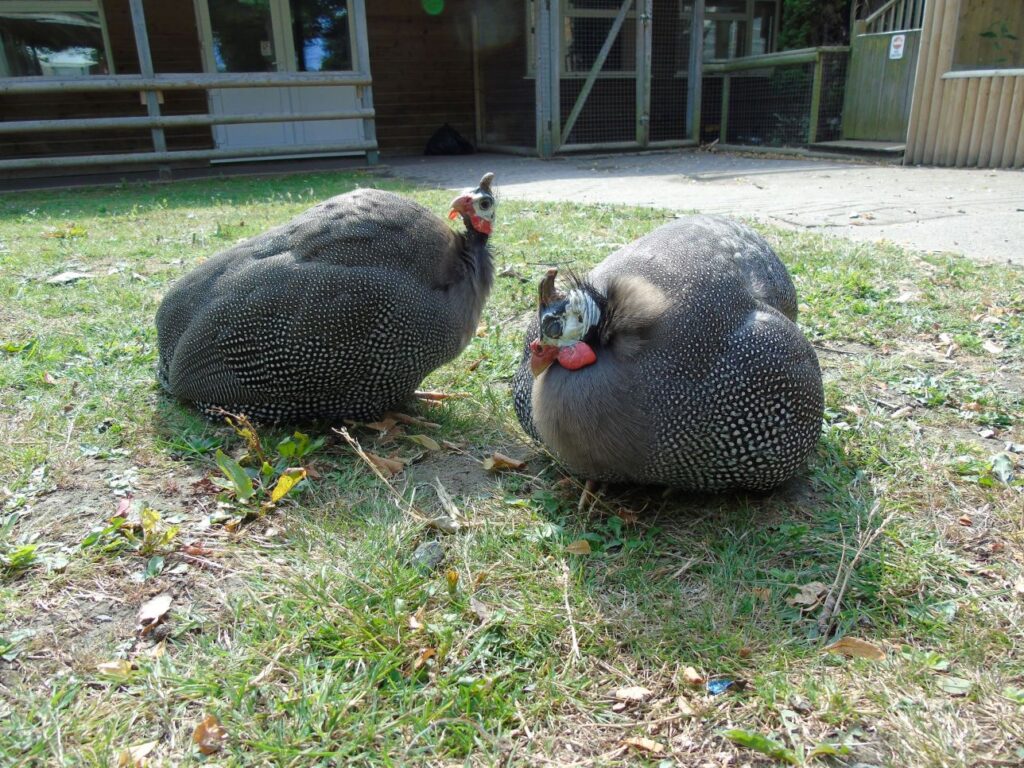
There are five species of guineafowl globally, all of which reside in Africa, and they are one of the oldest of the birds in the Galliformes order. We have helmeted guineafowl (Numida meleagris) at Wingham Wildlife Park which have the largest range of all the guineafowl species, native throughout much of sub-Saharan Africa. They grow to around 58cm in length and are named so because of the large bony crest that adorns their head called a “casque”. Their plumage sometimes makes my head hurt when studying it as the feathers are heavily pattered with spots and bars. Both males and females are similar in shape and colour and both have brightly coloured wattles as you can see in this photo that my friend John took on holiday in Africa.
They seem to prefer open landscapes and live in a variety of habitats from scrublands and edges of forested areas to land that has been cultivated. This probably reflects their diet as they are not fussy eaters. They are omnivorous feeding on mainly seeds and insects, but they will also eat vegetation such as bulbs, flowers and berries. Whilst they can fly, they prefer a more terrestrial way of life, usually running rather than flying. They can however burst suddenly into flight when pressed, and maintain flight to escape from threats like bush fires. They will also use their flight to spend the night roosting in trees.
Helmeted guineafowl are a sociable sort, living in flocks of up to around 200 birds. Guineafowl are commonly domesticated for their meat but are also sometimes used as “watchdogs” on farms as they will gabble loudly at the smallest disturbance. We are always hearing ours chatting away, making a range of vocalisations to each other whilst they happily munch away on grass, or look though cobwebs and other nooks and crannies for insects. They are great at pest control!
Our guineafowl were all born in April 2020, and this species usually lives arounds 15 years old. I’ll leave some mug shots below in case anyone wants to have a go at trying to identify them.
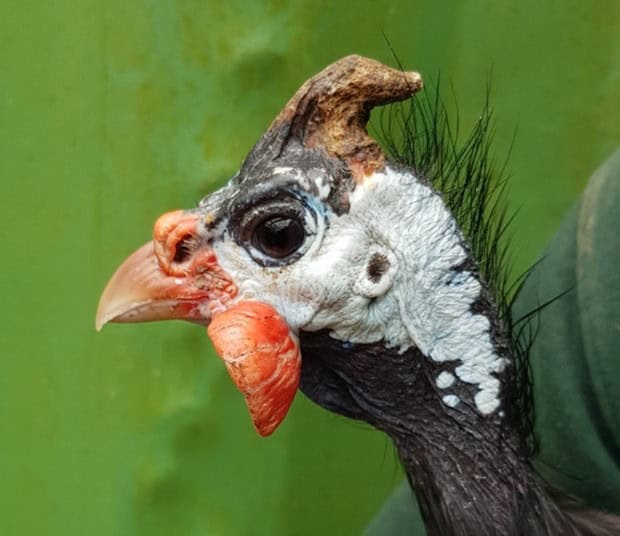
Ozzy, male guineafowl – witch hat-like casque.
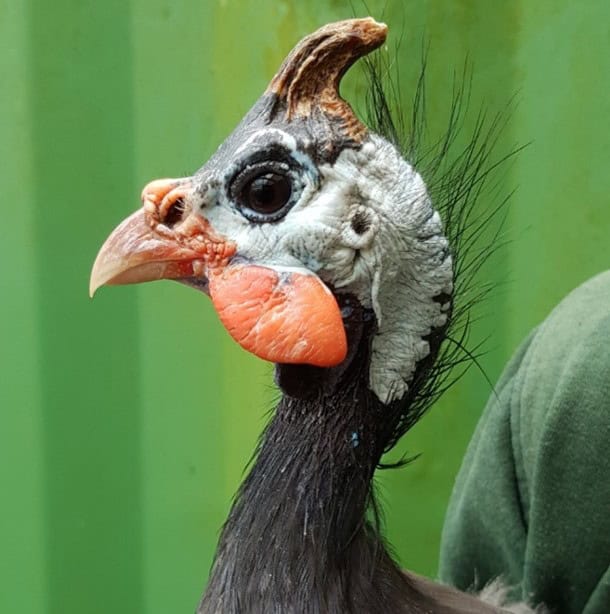
Corey, male guineafowl – groove in casque.
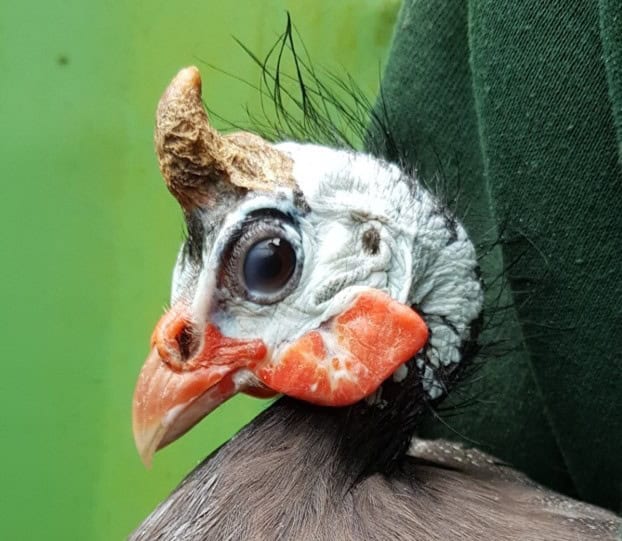
Chester, male guineafowl – long/curved and wrinkly casque.
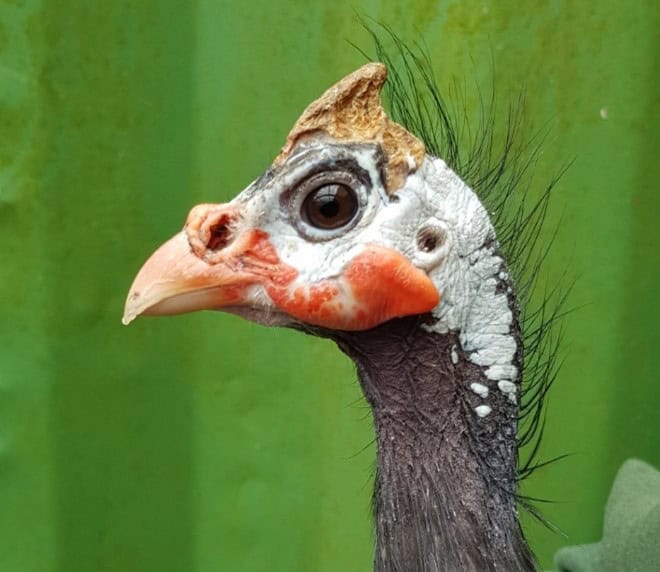
Janice, female guineafowl – small, triangular casque.
The number of birds at the park does vary sometimes when we have babies, which in the past have moved to new homes. Helmeted guineafowl create a crude hollow in the ground for their nest, with a small amount of vegetation. Females lay 6-12 eggs which are incubated for 25-29 days. Once the chicks hatch, they are precocial, meaning that they are advanced enough to follow mum and dad and feed themselves soon after hatching with both parents helping to raise the young. They will reach their full size when they are around 16 weeks old, eventually reaching an adult weight of around 1.3kg. I’ll end this guineafowl fest with some cute baby guineafowl, which are called keets. Enjoy!



